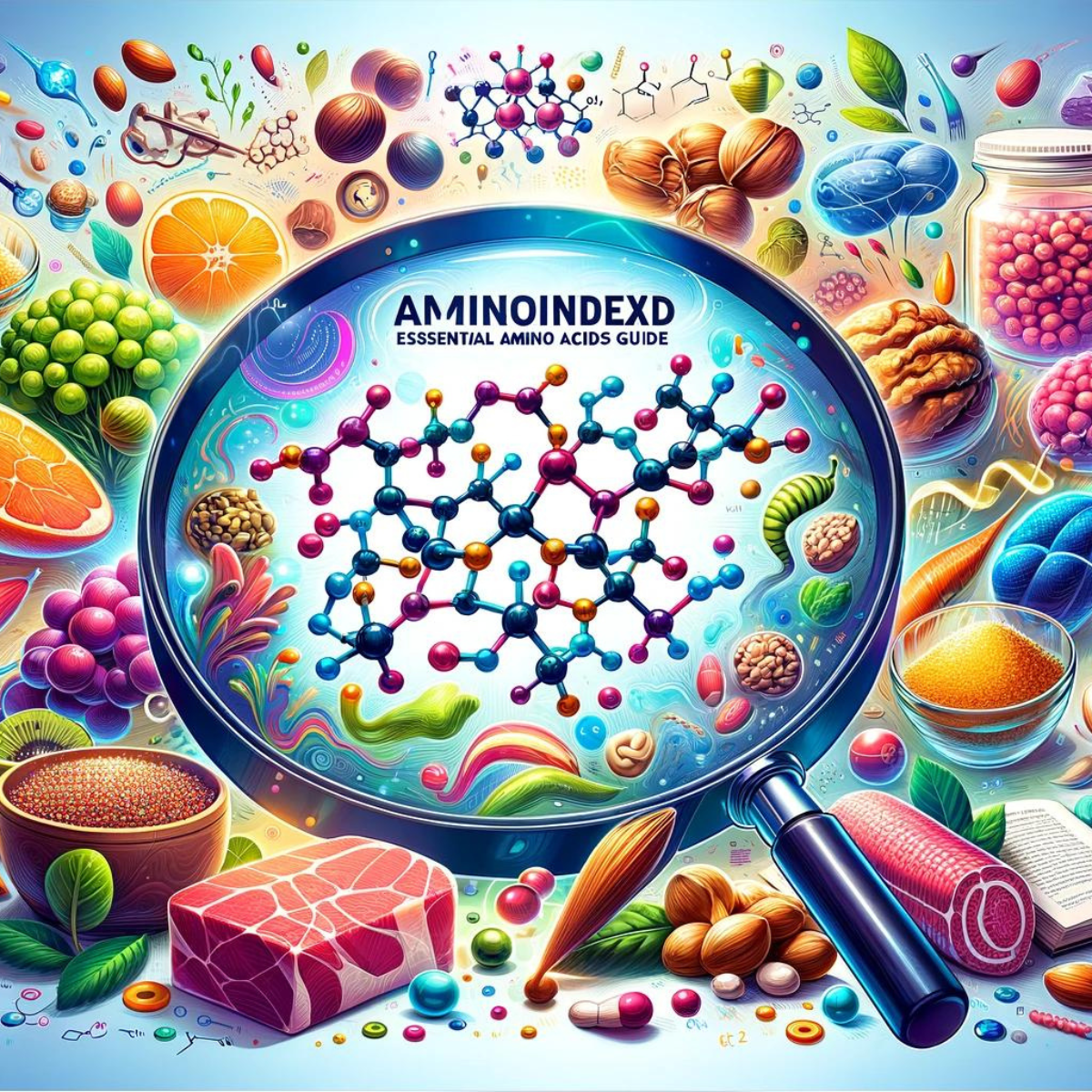สารพิษในสิ่งแวดล้อมและสุขภาพของไมโตคอนเดรีย

การแนะนำ
สารพิษในสิ่งแวดล้อม รวมถึงมลพิษ สารเคมี และโลหะหนัก อาจส่งผลกระทบอย่างมากต่อสุขภาพของไมโตคอนเดรีย สารพิษสามารถทำลายไมโตคอนเดรียได้โดยเพิ่มความเครียดออกซิเดชัน ทำให้การทำงานของเซลล์ลดลง และขัดขวางการผลิตพลังงาน หัวข้อนี้จะอธิบายเกี่ยวกับสารพิษในสิ่งแวดล้อมทั่วไป ผลกระทบต่อไมโตคอนเดรีย และกลยุทธ์ในทางปฏิบัติเพื่อลดการสัมผัสสารพิษและปกป้องสุขภาพของเซลล์
สารพิษในสิ่งแวดล้อมทั่วไปที่ส่งผลต่อไมโตคอนเดรีย
1. โลหะหนัก
เหตุใดจึงเป็นอันตราย: โลหะหนัก เช่น ตะกั่ว ปรอท และแคดเมียม สามารถรบกวนการทำงานของไมโตคอนเดรียโดยเพิ่มความเครียดออกซิเดชันและขัดขวางการผลิตพลังงาน
แหล่งที่มา :
- ตะกั่ว: มักพบในท่อเก่า สี และดินที่ปนเปื้อน
- ปรอท: มีอยู่ในปลาบางชนิด (เช่น ปลาอินทรีดาบ ปลาทูน่าครีบเหลือง) และสารผสมทางทันตกรรม
- แคดเมียม: มักพบในควันบุหรี่และวัสดุอุตสาหกรรมบางชนิด
เคล็ดลับด่วน: จำกัดการบริโภคปลาที่มีปรอทสูง และพิจารณาทดสอบโลหะหนักหากคุณสงสัยว่าจะได้รับสารดังกล่าว
2. ยาฆ่าแมลงและสารกำจัดวัชพืช
เหตุใดจึงเป็นอันตราย: ยาฆ่าแมลงและสารกำจัดวัชพืชสามารถทำให้เกิดภาวะเครียดออกซิเดชัน ส่งผลให้ไมโตคอนเดรียเสียหายและเซลล์ทำงานผิดปกติ
แหล่งที่มา: พบในผลไม้ ผัก และสนามหญ้าที่ไม่ใช่เกษตรอินทรีย์ที่ผ่านการใช้ยาฆ่าแมลงทางเคมี
เคล็ดลับด่วน: เลือกผลิตภัณฑ์ออร์แกนิกเมื่อทำได้เพื่อลดการสัมผัสกับยาฆ่าแมลงและล้างผลไม้และผักทั้งหมดให้สะอาด
3. มลพิษทางอากาศ
เหตุใดจึงเป็นอันตราย: สารมลพิษ เช่น อนุภาคขนาดเล็ก คาร์บอนมอนอกไซด์ และสารประกอบอินทรีย์ระเหยง่าย (VOCs) สามารถทำให้การทำงานของไมโตคอนเดรียลดลงโดยกระตุ้นให้เกิดการอักเสบและความเสียหายจากออกซิเดชัน
แหล่งที่มา: การปล่อยมลพิษจากยานพาหนะ สถานที่อุตสาหกรรม และแหล่งภายในอาคาร เช่น ผลิตภัณฑ์ทำความสะอาดและน้ำยาปรับอากาศ
เคล็ดลับด่วน: ใช้เครื่องฟอกอากาศในบ้าน โดยเฉพาะในเขตเมือง และหลีกเลี่ยงน้ำหอมปรับอากาศสังเคราะห์
4. สารพลาสติไซเซอร์ (เช่น BPA และ Phthalates)
เหตุใดจึงเป็นอันตราย: พลาสติไซเซอร์ เช่น BPA (บิสฟีนอลเอ) และพาทาเลตสามารถรบกวนการทำงานของไมโตคอนเดรียและเชื่อมโยงกับความไม่สมดุลของฮอร์โมนและความเครียดออกซิเดชัน
แหล่งที่มา: พบในภาชนะพลาสติก บรรจุภัณฑ์อาหาร และผลิตภัณฑ์ดูแลส่วนบุคคล
เคล็ดลับด่วน: เลือกผลิตภัณฑ์ที่ปราศจาก BPA และหลีกเลี่ยงการอุ่นอาหารในภาชนะพลาสติกเพื่อลดการสัมผัส
5. สารเคมีในครัวเรือน
เหตุใดจึงเป็นอันตราย: สารเคมีทั่วไปในผลิตภัณฑ์ทำความสะอาดและเครื่องสำอางสามารถผลิตผลพลอยได้ที่เป็นอันตรายซึ่งส่งผลให้ไมโตคอนเดรียเกิดความเครียด
แหล่งที่มา: ผลิตภัณฑ์ทำความสะอาดทั่วไป สิ่งของดูแลส่วนตัว และผงซักฟอกบางชนิด
เคล็ดลับด่วน: ใช้ผลิตภัณฑ์ทำความสะอาดจากธรรมชาติหรือทำเองที่บ้าน และตรวจสอบฉลากสำหรับตัวเลือกการดูแลส่วนบุคคลที่ปราศจากสารเคมี
เคล็ดลับปฏิบัติเพื่อลดการสัมผัสสารพิษ
การลดการสัมผัสกับสารพิษในสิ่งแวดล้อมสามารถช่วยปกป้องไมโตคอนเดรียและสุขภาพโดยรวมของคุณได้ ต่อไปนี้เป็นขั้นตอนปฏิบัติเพื่อลดการสัมผัสกับสารพิษในชีวิตประจำวันของคุณ:
- กรองน้ำ: ใช้ตัวกรองน้ำคุณภาพสูงเพื่อลดสารปนเปื้อน เช่น ตะกั่วและคลอรีนในน้ำดื่ม
- เพิ่มคุณภาพอากาศภายในอาคาร: ระบายอากาศภายในบ้านเป็นประจำ ใช้เครื่องฟอกอากาศ และเพิ่มต้นไม้ในร่มเพื่อปรับปรุงคุณภาพอากาศ
- เลือกผลิตภัณฑ์ออร์แกนิกและเป็นธรรมชาติ: เลือกอาหารออร์แกนิก ผลิตภัณฑ์ทำความสะอาดจากธรรมชาติ และผลิตภัณฑ์ดูแลส่วนบุคคลที่ปราศจากสารเคมี เพื่อจำกัดการสัมผัสกับสารพิษ
- หลีกเลี่ยงภาชนะพลาสติก: เก็บอาหารในภาชนะแก้วหรือสแตนเลส และหลีกเลี่ยงการอุ่นอาหารในพลาสติก
บทสรุป
การดำเนินการเชิงรุกเพื่อลดการสัมผัสกับสารพิษในสิ่งแวดล้อมจะช่วยสนับสนุนการทำงานของไมโตคอนเดรียและปกป้องเซลล์ของคุณจากความเสียหายจากออกซิเดชั่น การเปลี่ยนแปลงเล็กๆ น้อยๆ เช่น เลือกอาหารออร์แกนิก กรองน้ำ และลดการใช้พลาสติก สามารถช่วยสร้างสภาพแวดล้อมที่ดีต่อสุขภาพสำหรับไมโตคอนเดรียและความเป็นอยู่โดยรวมของคุณ
อ้างอิง
หากต้องการดูรายการอ้างอิงทั้งหมดที่สนับสนุนบทความนี้ โปรดไปที่หน้าหลัก: Power Up Your Cells: Science-Backed Tips for Mitochondrial Health















